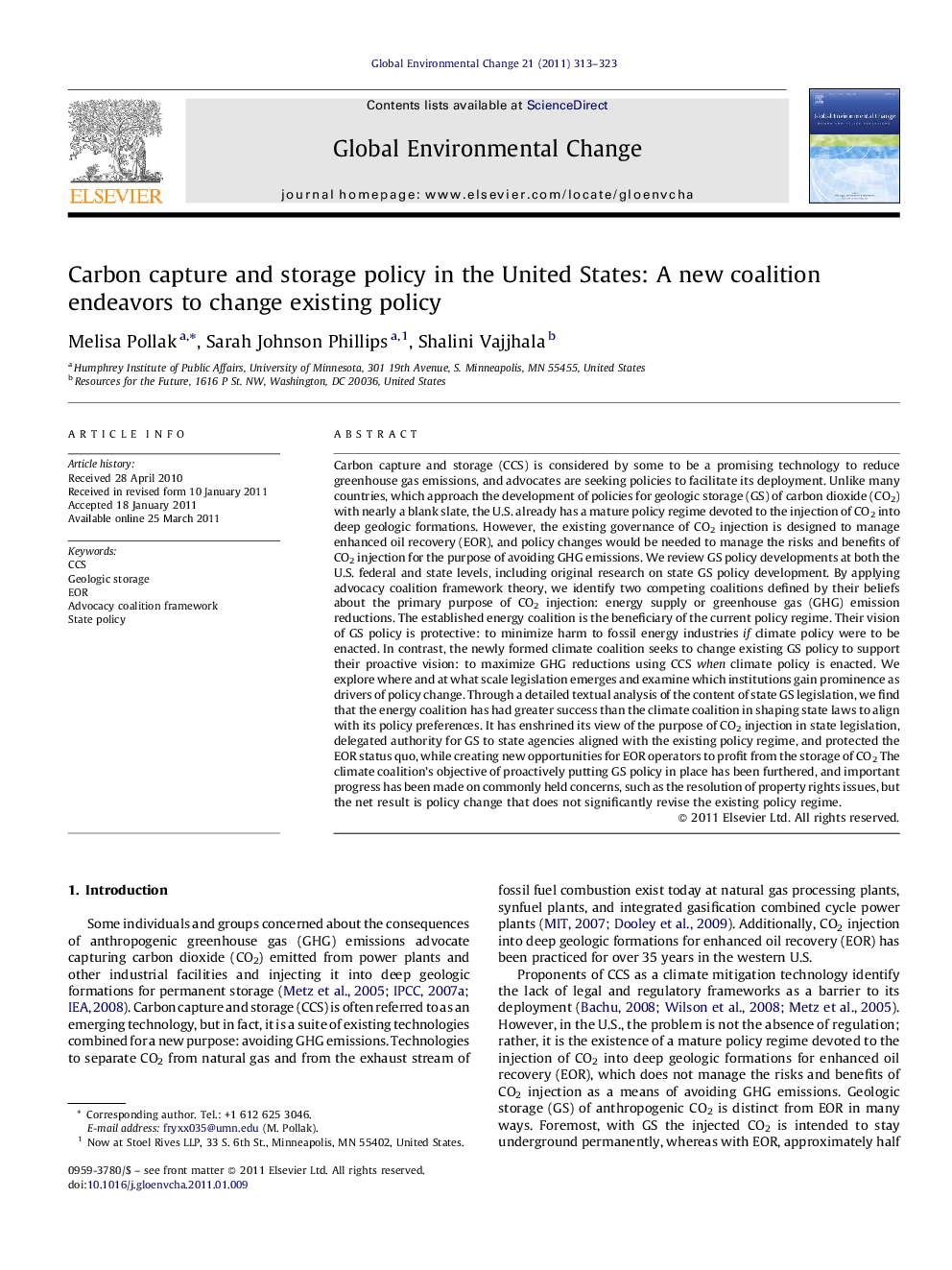| Article ID | Journal | Published Year | Pages | File Type |
|---|---|---|---|---|
| 1054917 | Global Environmental Change | 2011 | 11 Pages |
Abstract
⺠The U.S. has a mature policy regime devoted to the injection of CO2 into deep geologic formations for EOR, not to manage the risks and benefits of CO2 injection as a means of avoiding GHG emissions. The GS policy process in the U.S. is therefore one of potential policy change, not policy creation. ⺠Two competing coalitions defined by differing beliefs about the primary purpose of injecting CO2 into deep geologic formations have shaped the CCS policy debate in the U.S. over the past decade. The established energy coalition is the beneficiary of the current policy regime and seeks to defend the status quo. In contrast, the newly formed climate coalition seeks to change existing policy to manage the risks and benefits of CO2 injection as a means of avoiding GHG emissions. ⺠Significant policy activity with regards to injection of CO2 took place over the past decade. Laws related to injection of CO2 for the purpose of geologic storage now exist in 23 states and rules governing geologic storage have been finalized by the U.S. Environmental Protection Agency. ⺠The energy coalition has had greater success shaping new policy to align with its policy preferences, especially at the state level. The outcome of policy activity supports Advocacy Coalition Framework hypotheses that policy change is unlikely when there have been no significant perturbations from outside the policy subsystem and when the coalition that instituted the existing regime is still in power. ⺠The net result has been policy activity that does not significantly change the existing policy regime.
Related Topics
Life Sciences
Environmental Science
Environmental Science (General)
Authors
Melisa Pollak, Sarah Johnson Phillips, Shalini Vajjhala,
